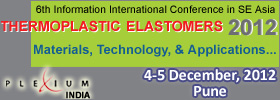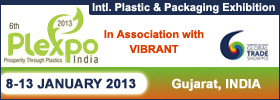
ARTICLES
Researchers have engineered a new fabric that can conduct electricity, thus paving the way for stretchable electronics. Employing novel textile engineering techniques, researchers have developed a highly conductive polymer that can withstand significant stretching. This material is also highly sensitive and reliable for touch sensing. The new fabric can be stretched like a rubber band and has high sensitivity to strain. It is expected to find application in medical devices and is expected see future growth where medical devices can integrate seamlessly into the human body to track a patient's vital signs and transmit the signals to a doctor. Read more in New technology from flexible polymers and nano-carbon materials allows electronics to drape
Several research groups have investigated different ways to produce flexible electronic sensors. Synthetic material from plastic that consists of a long chain of molecules joined by relatively weak hydrogen bonds, result in the molecules breaking easily. Researchers may have designed a synthetic version—a flexible, electrically conductive, self-healing polymer. This is the first time that a combination of both mechanical and electrical self-healing has been successful. The team is working to make the polymer more like human skin. Read more in A synthetic skin made from flexible, electrically conductive, self-healing polymer
Injectable gels hold promise for treating many types of diseases, including cancer. Their drawback however, is that they do not always maintain their solid structure once inside the human body. A newly unveiled degradable polymer-tipped network allows the gels to maintain a structure inside the body. Potential applications of these nanostructured gels include preventing blood loss, accelerating wound healing and protecting against infections and disease. Read more in New injectable gels combined with plastics toughen when heated to body temperature
Oil spills impact not only the underwater ecosystem, but also lives of many individuals who rely on the body of water for a living. Researchers have unveiled a new super-absorbent material that can soak up 40 times its weight in oil and contain it. This allows for the clean-up of water, but also preserves the oil for harvesting. Additionally, researchers in China have made a new type of membrane that can separate oil from water and could potentially be used in oil spills. Read more in A super-absorbent thermodegradable polyolefin soaks 40 times its weight in oil, membranes for oil spill cleaning
Traditional lenses, like those found in optical telescopes and microscopes, use their surface shape or single index of refraction to bend light. Current generation intraocular replacement lenses use their shape to focus light to a precise prescription, much like contacts or eye glasses. The single-refraction replacement lens can create aberrations and other unwanted optical effects. Under a new technology; GRIN- Gradient Refractive Index Optics; light gets bent by varying degrees as it passes through a lens or other transparent material. GRIN also enables optical systems with fewer components, which is important for consumer vision products and ground and aerial-based military surveillance products. Read more in Artificial lens from nanoscale polymer layers near identical to human eye lens
Magnetic hard drive developers have almost reached the physical limit to where they can cram up data. There is little room for increase in storage capacity as the maximum density of dots has almost been reached in magnetic hard drives. Any closer positioning would cause the dots to become unstable due to their neighbors’ magnetic field. A novel technique makes use of self-assembling polymers to create the smallest magnetic dots in the world. Read more in Self-assembling polymer increases hard disk drive memory capacity by a factor of five
A new polymer composite can absorb the impact from high-velocity projectiles and instantly repair itself. This structured polymer composite, can actually self-assemble into alternating glassy and rubbery layers. In addition to yielding better body armor for soldiers and police, the composite could potentially provide more resilient outer layers for spacecraft to ward off meteorite fragments and other space debris, and more durable jet-turbine blades. Read more in A bulletproof polymer composite material that is paper-thin and self repairing
Gulf-based petrochemical producers have been able to continue implementing strategic moves during the economic downturn. With an improvement in world economic situation, the Gulf petrochemical industry would emerge as one of the strongest production hubs in the global industry, and could almost double their market share to reach 20% of global production over the next decade. As the demand for petrochemical products moves East, India, with a burgeoning middle-class that will number around 400 million by 2025, is among the most important growth markets. Rread more in India among the most important growth markets for petrochem companies from the Gulf petrochem sector

While molding, if we shoot a half inch per second how many inches per second am i shooting past the gates on a 8 cavity mold.
What chemicals we add for second grade PP granules products to get glass finish and remove moisture
What is the polymer grade used in the manufacture of PP yarn? What is the grade used in non woven fabric of PP. is there any difference in MFI ?
When running thick wall pipe in larger diameters (10x7.3, 12x9, etc.) Channels get formed in bottom ID of the pipe during the extrusion process. Switching our material does fix this. Looking for a solution.
We are planning to manufacturer CPVC pipes and fittings. I require: list of CPVC resin manufacturers and CPVC resin suppliers



















